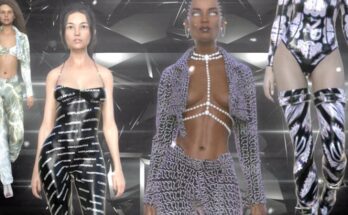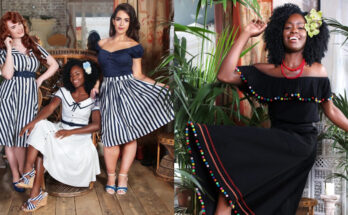Introduction to the Intersection of Fashion and Technology
Imagine a world where your jacket adjusts its temperature based on the weather, or a dress prints itself at home customized to your exact measurements. This may sound like science fiction, but it’s rapidly becoming reality thanks to the fusion of fashion and technology. This blog post will explore how technology is transforming the fashion industry, bringing numerous innovations that are reshaping every aspect from design to retail.
Historical Overview of Technology in the Fashion Industry
The marriage between fashion and technology isn’t new. In fact, the sewing machine, an invention from the 19th century, was one of the earliest examples of technology revolutionizing fashion. Fast forward to the 20th century, and we see the advent of synthetic fibers like nylon and polyester, which changed fabric production forever. Each technological leap has opened new doors, and today, we find ourselves on the cusp of yet another transformation driven by digital and smart technologies.
Current Trends and Innovations in Fashion Technology
Wearable Tech
Wearable technology has moved well beyond fitness trackers. Smart fabrics and e-textiles can now monitor health metrics, charge devices, and even display digital art. For example, Google’s Project Jacquard has teamed up with Levi’s to create smart jackets that allow users to control their smartphones via touch-sensitive fabric. This trend isn’t just about gadgets; it’s about integrating technology seamlessly into our lives.
3D Printing
3D printing is revolutionizing how clothes are made. Brands like Adidas are using 3D printing to produce shoes with intricate designs impossible to create by traditional methods. This technology allows for rapid prototyping and customization, offering consumers unique pieces tailored to their preferences. Imagine walking into a store, getting your foot scanned, and walking out with a perfectly fitted shoe created just for you.
Augmented Reality (AR) in Retail
Gone are the days when online shopping meant guessing if something would fit. Augmented Reality (AR) is now allowing consumers to “try on” clothes virtually. Brands like Zara and Warby Parker are using AR to enhance the shopping experience, enabling customers to see how outfits or glasses look on them without stepping into a store. This technology not only improves customer satisfaction but also reduces return rates.
Sustainable Fashion Through Technology
Sustainability is a massive concern in the fashion industry, and technology is playing a vital role in addressing it. From water-saving dyeing techniques to blockchain for supply chain transparency, tech innovations are making fashion more sustainable. Companies like H&M are investing in technologies that recycle old clothes into new fabric, minimizing waste and promoting circular fashion.
Impact on the Fashion Industry
Changes in Consumer Behavior
Technology has changed how consumers interact with fashion. Social media platforms like Instagram and Pinterest are not just for sharing photos; they are influential fashion discovery tools. Consumers now expect brands to be tech-savvy and socially responsible. They want instant access to the latest trends and the ability to purchase items with a click.
Business Models and Supply Chain
The traditional fashion calendar is becoming obsolete. With the rise of fast fashion and direct-to-consumer models, brands can now release new collections at any time, responding more quickly to market demands. Technology enables real-time data analytics, which helps brands forecast trends and manage inventory more efficiently. This shift results in lower costs and reduced waste.
Design and Manufacturing Processes
Designers are leveraging software like CLO 3D to create virtual prototypes, significantly reducing the time and resources needed for physical samples. Automation in manufacturing is also on the rise, with robots capable of performing tasks like sewing and cutting fabric with precision. These advancements enable designers to push creative boundaries while maintaining practicality and efficiency.
Case Studies of Successful Fashion Tech Integration
Nike’s Self-Lacing Shoes
Nike has always been at the forefront of innovation, and their self-lacing shoes, inspired by “Back to the Future,” are no exception. Using a system of cables and pressure sensors, these shoes adjust themselves to the wearer’s foot, offering unparalleled comfort and performance. This product exemplifies how technology can enhance functionality and user experience.
Burberry’s Digital Transformation
Burberry has embraced digital technology to transform its brand image and operations. By incorporating RFID tags in their clothing, they provide customers with detailed information about each piece’s history and craftsmanship. Their use of augmented reality in stores also offers an immersive shopping experience, blending the physical and digital worlds seamlessly.
Stitch Fix’s Data-Driven Personalization
Stitch Fix uses AI and machine learning to curate personalized fashion boxes for its customers. By analyzing data from millions of users, they can predict individual preferences and trends, offering a highly customized shopping experience. This data-driven approach has set a new standard for personalization in fashion retail.
Future Outlook and Predictions for the Fashion Tech Landscape
The future of fashion tech is bright, with endless possibilities on the horizon. We can expect to see more advancements in smart fabrics, AI-driven design, and sustainable practices. Virtual reality (VR) fashion shows could become the norm, allowing designers to showcase their collections to a global audience without the need for physical venues. Additionally, blockchain technology will likely play a significant role in ensuring transparency and authenticity in the fashion supply chain.
Conclusion
In conclusion, technology is not just an add-on to the fashion industry; it is a fundamental force driving its evolution. From wearable tech and 3D printing to augmented reality and sustainable practices, the innovations shaping fashion today are as diverse as they are groundbreaking. For fashion enthusiasts and tech-savvy consumers, staying updated on these trends is essential to fully appreciate the future of fashion. Your thoughts and experiences matter to us! Share your insights in the comments below and spread the word by sharing this post with fellow fashion lovers.
The intersection of fashion and technology is a dynamic space full of exciting developments. Whether you’re a designer, a consumer, or a business owner, understanding these advancements can provide a competitive edge and enrich your appreciation of the fashion world.
Keep exploring, keep innovating, and most importantly, stay stylish!



